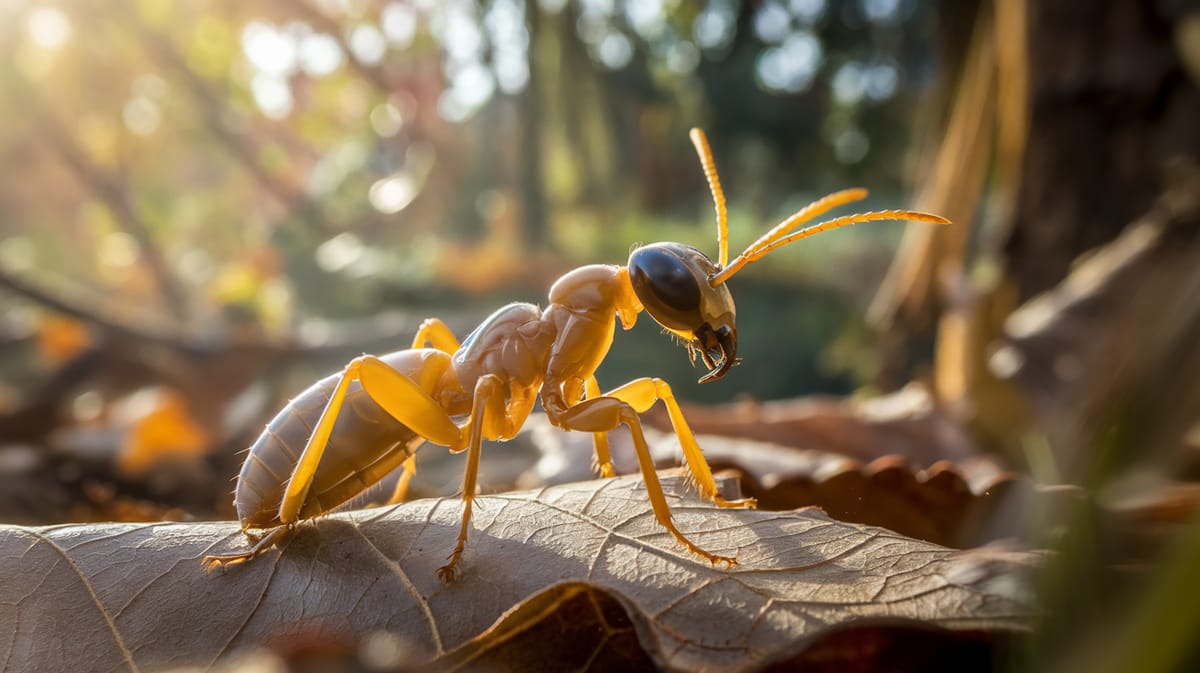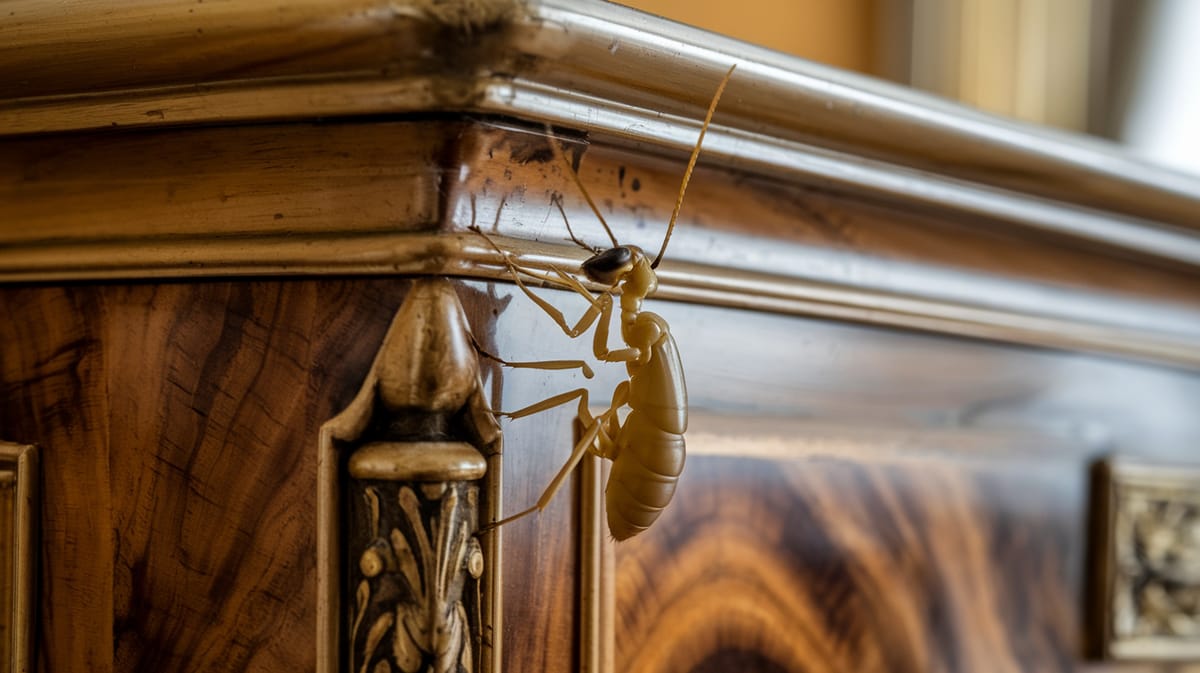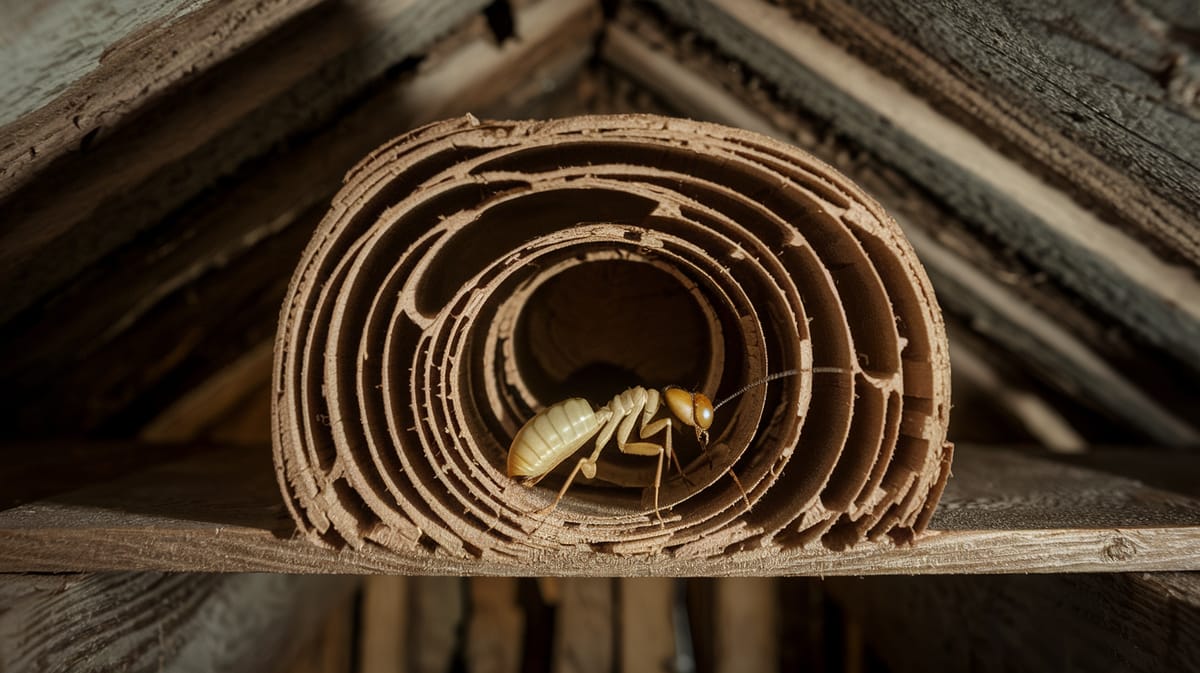Drywood Termites
Silent architects of destruction, Drywood Termites thrive in dry wood, avoiding soil contact and digesting cellulose with ease. Their intricate colonies play a vital role in breaking down dead trees.

Key Insights at a Glance
Did You Know?
Taxonomy & Classification
Drywood termites thrive in dry wood environments, lacking the need for soil contact, an adaptation that reflects their unique evolutionary path. Let's understand the evolutionary journey and classification of these remarkable decomposers.
Genus Diversity
The genus Cryptotermes includes about 50 species, known for their ability to infest dry wood without external moisture sources.
Survival Adaptations
Drywood termites evolved 80 million years ago, developing specialized enzymes to digest cellulose, aiding their survival in nutrient-poor environments.
Lifecycle and Growth
A remarkable journey of transformation from Egg to Adult.
Egg
Eggs are laid in secluded wood crevices, safeguarded by the colony, eventually hatching into nymphs ready to begin their life cycle.
Nymph
Nymphs undergo several molts, gradually developing adult characteristics, including wing buds and reproductive organs, while feeding on wood.
Adult
Adults form colonies, with reproductives establishing new nests, while soldiers and workers maintain and protect the colony's wood habitat.
Dietary Habits
Efficient wood decomposers, these insects thrive on cellulose-rich materials, leveraging specialized gut symbionts to digest tough plant fibers.
| DIET TYPE | DESCRIPTION |
|---|---|
| Primary Diet | Primarily consumes dry wood, extracting cellulose from within using their powerful mandibles. |
| Secondary Diet | Occasionally feeds on paper products and cardboard, exploiting their cellulose content for sustenance. |
| Occasional | Rarely ingests dead plant matter or bark when wood sources are scarce, demonstrating adaptability in diet. |

Behaviour and Adaptations
Discover the unique adaptations that enable Drywood Termites to thrive in wood-rich environments.
Wood Digestion
Efficiently break down cellulose in wood using specialized gut microbes.
Silent Invaders
Stealthily inhabit and consume wood structures, often undetected.
Colony Coordination
Complex social systems ensure effective resource allocation and defense.
Ecosystem Impact
Supporting ecosystem balance by highlighting the unique roles of Drywood Termites.
Decomposition Aiders
Break down dead wood, recycling nutrients back into the ecosystem.
Soil Aerators
Enhance soil structure by creating tunnels, improving water and nutrient flow.
Biodiversity Boosters
Provide habitat and resources for various microorganisms and insects.
Conservation Challenges
Conserving Drywood Termites requires understanding their threats and implementing effective solutions.
Habitat Destruction
Deforestation and urbanization reduce their natural living spaces.
Chemical Control
Pesticides used in termite management can decimate populations.
Climate Change
Altered weather patterns disrupt termite breeding and survival.
Frequently Asked Questions
How long do Drywood Termites live?
Drywood termites typically live about two to five years. The lifespan can vary based on environmental factors and colony health. Reproductive termites, or alates, may live longer if they successfully establish new colonies.
What do Drywood Termites eat?
Drywood termites primarily feed on dry wood. They consume cellulose, which is found in wood, paper, and other plant materials. Unlike other termites, they do not require contact with soil and can live entirely within the wood they infest.
Are Drywood Termites poisonous?
Drywood termites are not poisonous. They do not pose a direct threat to humans or pets through toxins or stings. However, their wood-destroying activities can cause significant structural damage to buildings.
Are Drywood Termites endangered?
Drywood termites are not considered endangered. They are widely distributed and thrive in various climates, particularly in warm coastal regions. Their populations are stable, and they are not listed on any endangered or threatened species lists.
What do Drywood Termites symbolize?
Drywood termites are often seen as symbols of quiet destruction due to their ability to damage structures unnoticed over time. In some cultures, they may represent persistence or the consequences of neglecting underlying problems.
Do Drywood Termites bite?
Drywood termites do not bite humans. Their mandibles are adapted for chewing wood, not biting people. While they can cause structural damage, they are not aggressive and do not pose a direct threat to human safety.
What color are Drywood Termites?
Drywood termites are typically light brown to dark brown in color. They can also appear cream-colored or reddish-brown. The exact color may vary depending on the termite's caste, with workers and soldiers differing slightly from reproductive alates.
Does a Drywood Termites have wings?
Yes, reproductive Drywood termites, known as alates, have wings. These wings are equal in length and are used during their mating season to swarm and establish new colonies. After finding a suitable location, they shed their wings.
What does a Drywood Termites look like?
Drywood termites are small insects with straight, cylindrical bodies. Workers and soldiers are wingless, while reproductive alates have wings. They have straight antennae and range from creamy white to brown, depending on their caste and role within the colony.
Is a Drywood Termites an insect?
Yes, Drywood termites are insects. They belong to the order Blattodea and are closely related to cockroaches. Like other insects, they have a three-part body structure: head, thorax, and abdomen, along with six legs and a pair of antennae.
Related Insects
Discover insects with similar characteristics to Drywood Termites - including shared habitats, diets, and taxonomic classifications
Share this profile
Help others discover Drywood Termites
